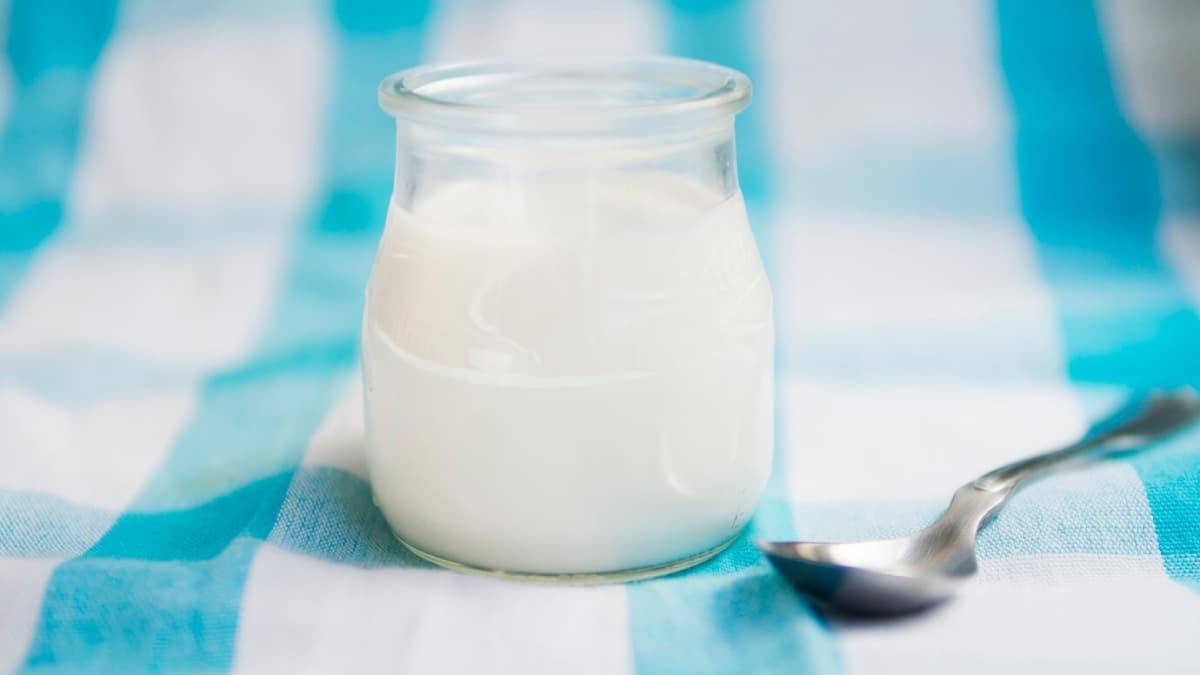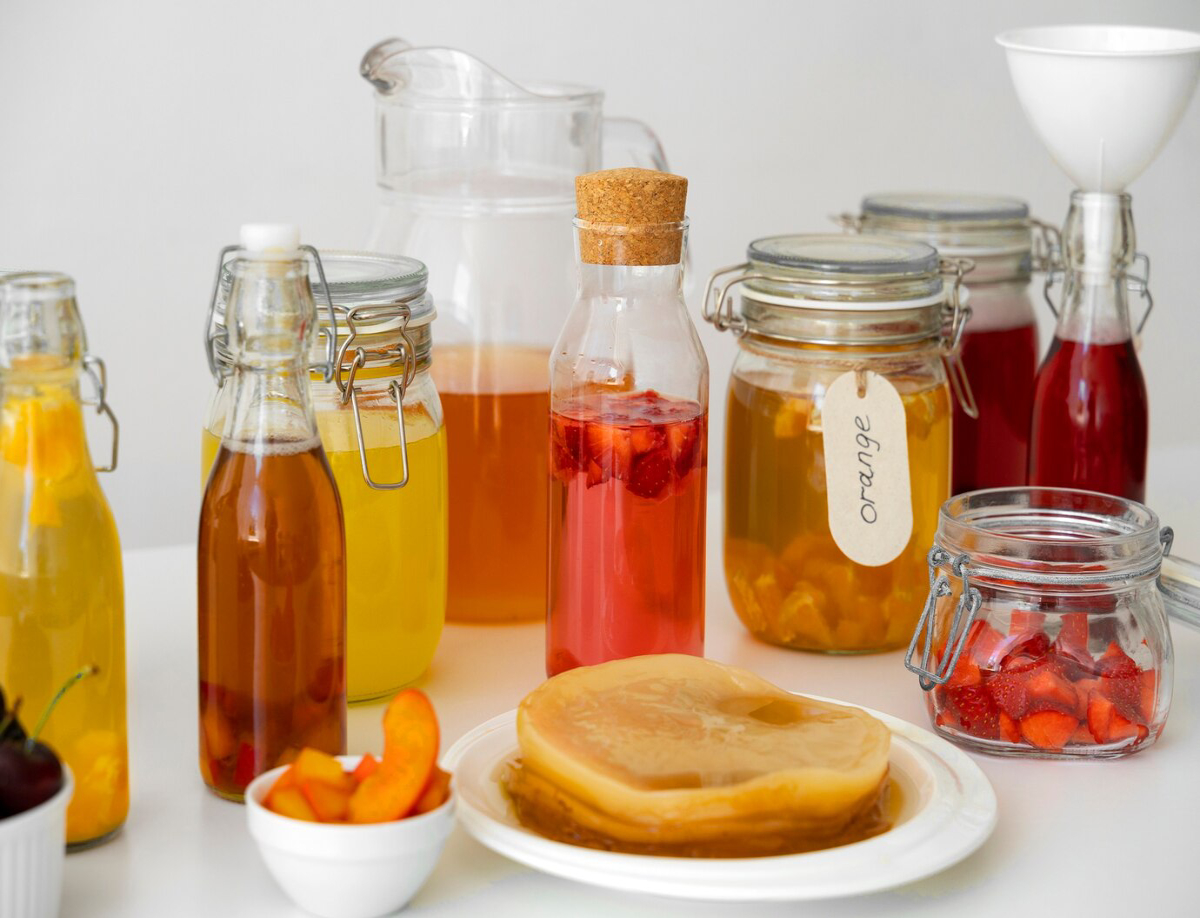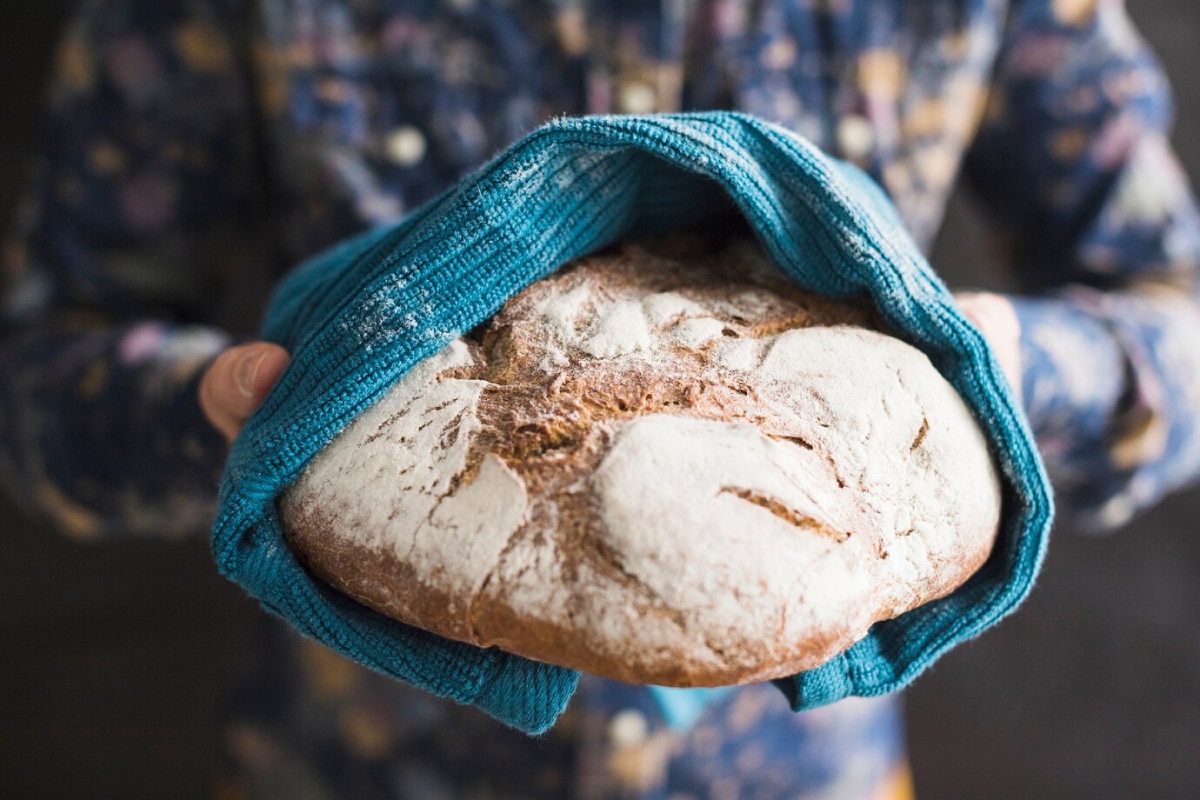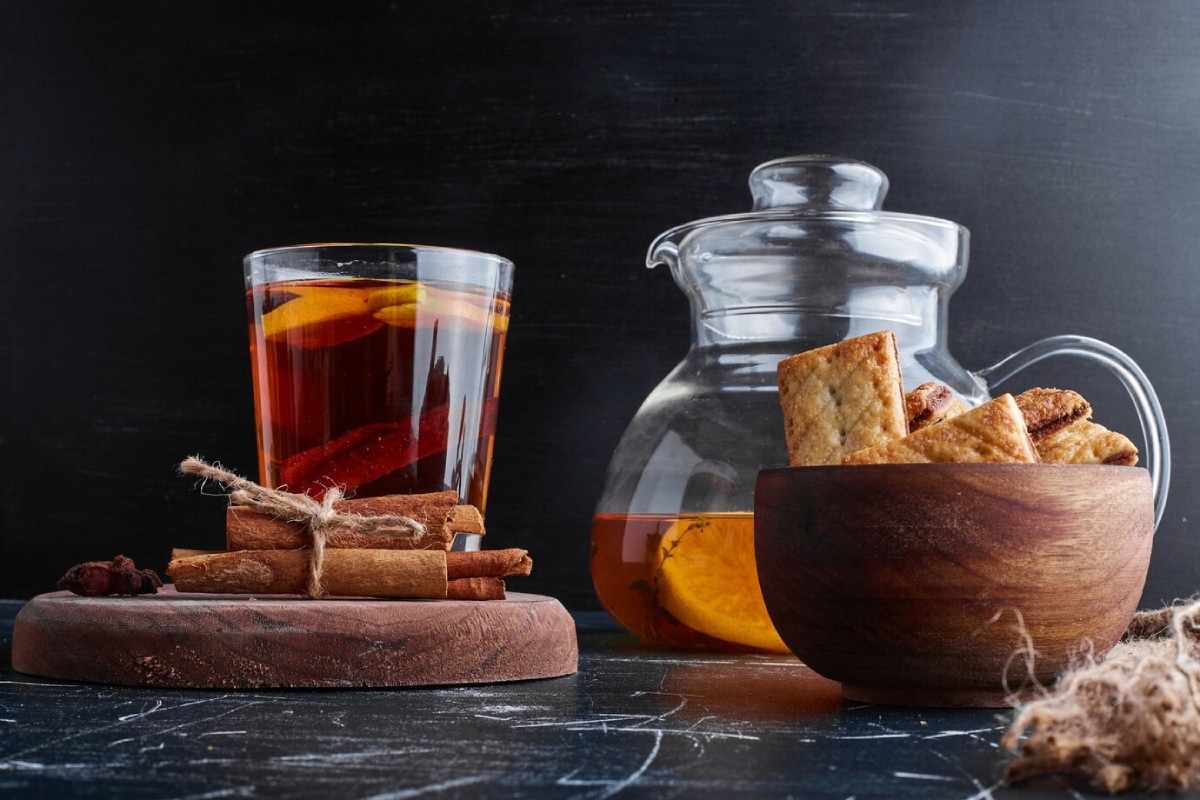
Brewing Kombucha at Home for a Refreshing and Probiotic Drink
If you’ve ever strolled past the health drink section of your local organic shop, chances are you’ve seen the glowing bottles of kombucha—a tangy, fizzy, fermented tea drink often adorned with words like “probiotic,” “raw,” and “gut-loving.” But did you know you can make it right in your kitchen?
Homemade kombucha is more affordable, customisable, and satisfying than store-bought varieties. Whether you’re a seasoned fermenter or brand new to brewing, crafting your own kombucha can be both a rewarding ritual and a flavour adventure.
In this guide, you’ll learn how to master this kombucha recipe DIY-style, understand the fermentation process, troubleshoot common issues, and infuse your brew with delicious personal flair. So roll up your sleeves—it’s time to get brewing!
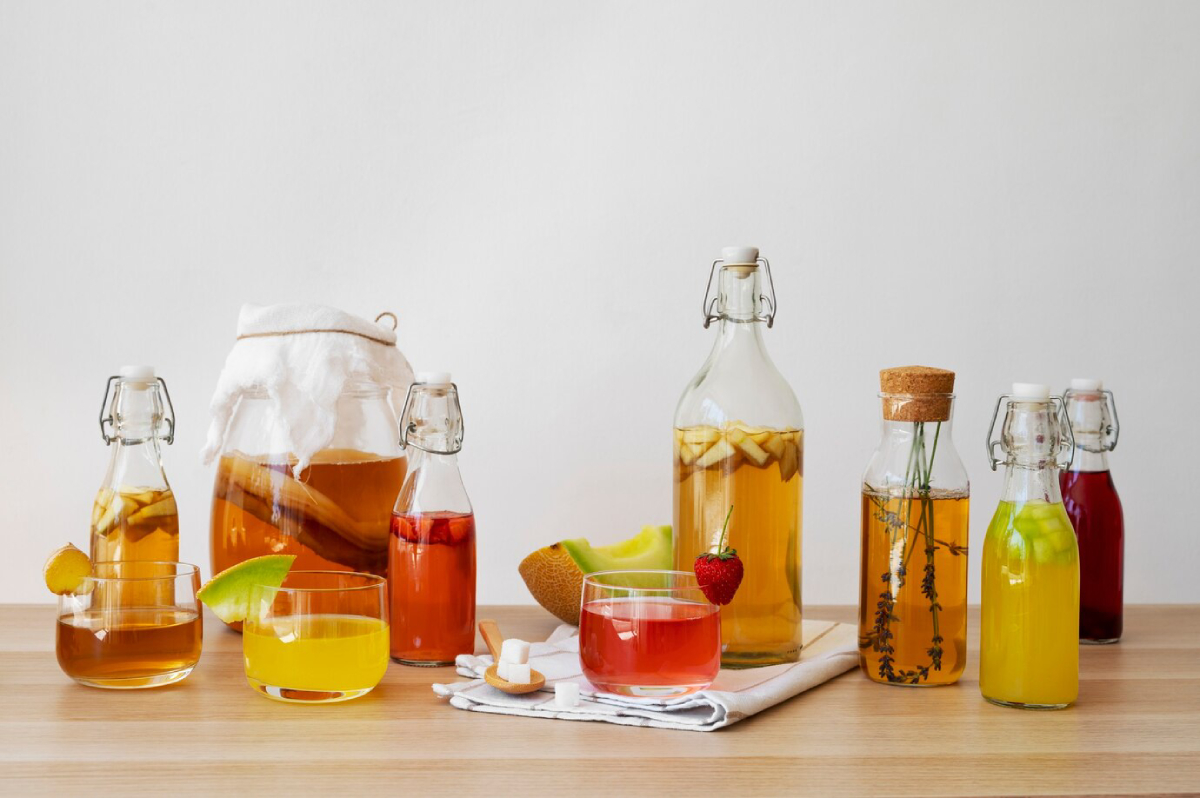
What Is Kombucha?
Kombucha is a slightly effervescent drink made by fermenting sweetened tea with a symbiotic culture of bacteria and yeast—commonly referred to as a SCOBY.
What It Contains:
- Beneficial bacteria and yeast (like Saccharomyces, Acetobacter)
- B vitamins
- Organic acids (like acetic, gluconic, and glucuronic)
- A touch of residual caffeine and sugar
Health Benefits:
- Supports gut health with probiotics
- May aid digestion and detoxification
- Natural energy boost from B vitamins
Want to dive deeper into fermented drinks? Read Fermented Ginger Beer Without Alcohol
The Fermentation Process Explained
Step 1: Sweet Tea Preparation
The base for kombucha is simply black or green tea and sugar. The sugar isn’t for you—it’s for the microbes.
Step 2: SCOBY Magic
The SCOBY consumes the sugar and caffeine, producing organic acids and bubbles.
Step 3: Fermentation
Typically takes 7–14 days depending on temperature. The longer it ferments, the more tangy and less sweet it becomes.
Step 4: Flavouring & Bottling (Secondary Fermentation)
Add fruits, herbs, or spices to bottle your kombucha and create fizz.
Equipment You’ll Need
Essentials:
- 1 large glass jar (2–4 litres)
- Tightly woven cloth or coffee filter + rubber band
- Stainless steel pot (for boiling tea)
- Funnel and bottles with flip tops
- Wooden or silicone spoon
Ingredients:
- 8 bags of black or green tea (or 2 tbsp loose leaf)
- 1 cup white sugar
- 3.5 litres filtered water
- 1 SCOBY (with 1 cup starter liquid)
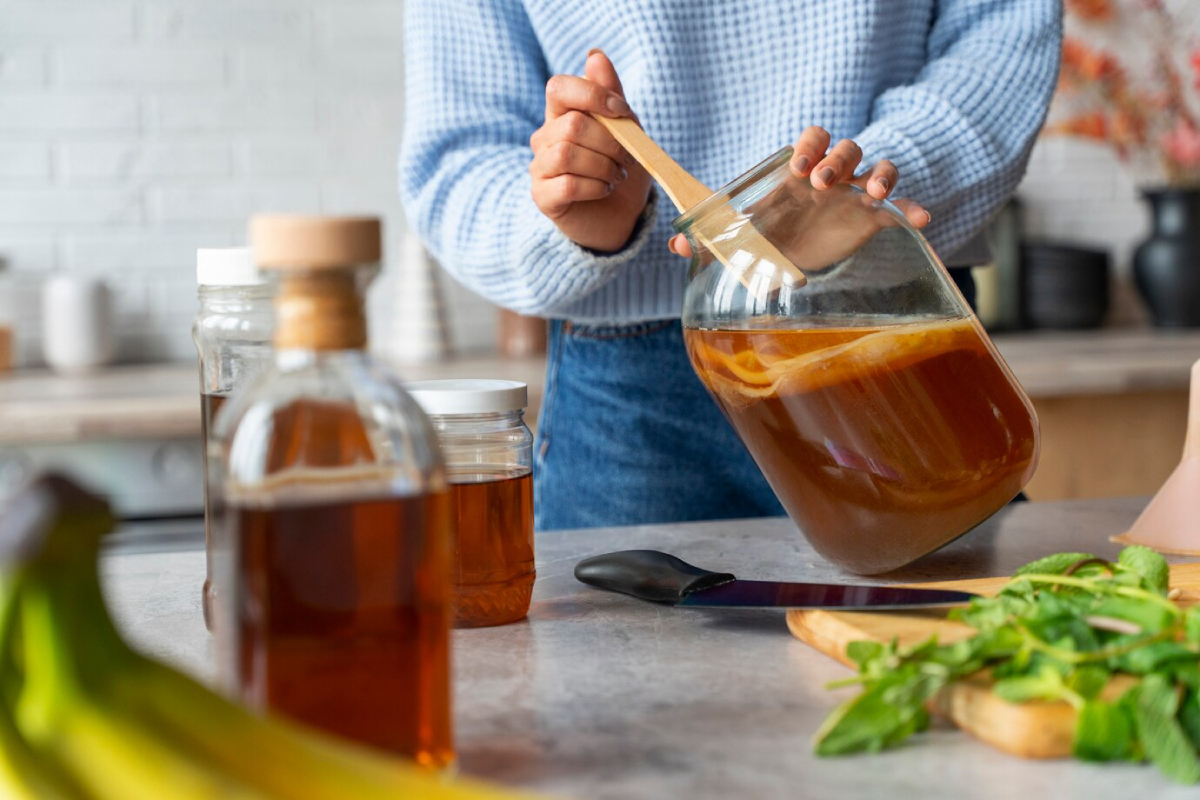
DIY Kombucha Recipe
Step 1: Brew Your Sweet Tea
- Boil 1 litre of water.
- Steep tea for 10 minutes.
- Stir in 1 cup sugar until dissolved.
- Add 2.5 litres cold water to cool.
Step 2: Add Your SCOBY
- Pour the cooled tea into your fermenting jar.
- Gently add your SCOBY and starter liquid.
- Cover the jar with cloth and secure with a rubber band.
Step 3: First Fermentation
- Store in a warm, dark place (22–28°C).
- Taste after 7 days. Too sweet? Let it go longer.
- When it’s just tangy enough, proceed to bottling.
Step 4: Second Fermentation (Optional)
- Remove SCOBY and 1 cup of liquid (for next batch).
- Pour tea into flip-top bottles.
- Add flavouring: fruit, herbs, juice.
- Seal and ferment 2–5 days at room temp.
- Refrigerate and enjoy chilled!
Flavouring Ideas for Second Ferment
Fruity:
- Raspberry and lime
- Pineapple and ginger
- Apple and cinnamon
Herbal:
- Mint and cucumber
- Lavender and lemon
- Basil and strawberry
Spicy:
- Jalapeño and mango
- Turmeric and black pepper
Tip: Strain solids before drinking if preferred.
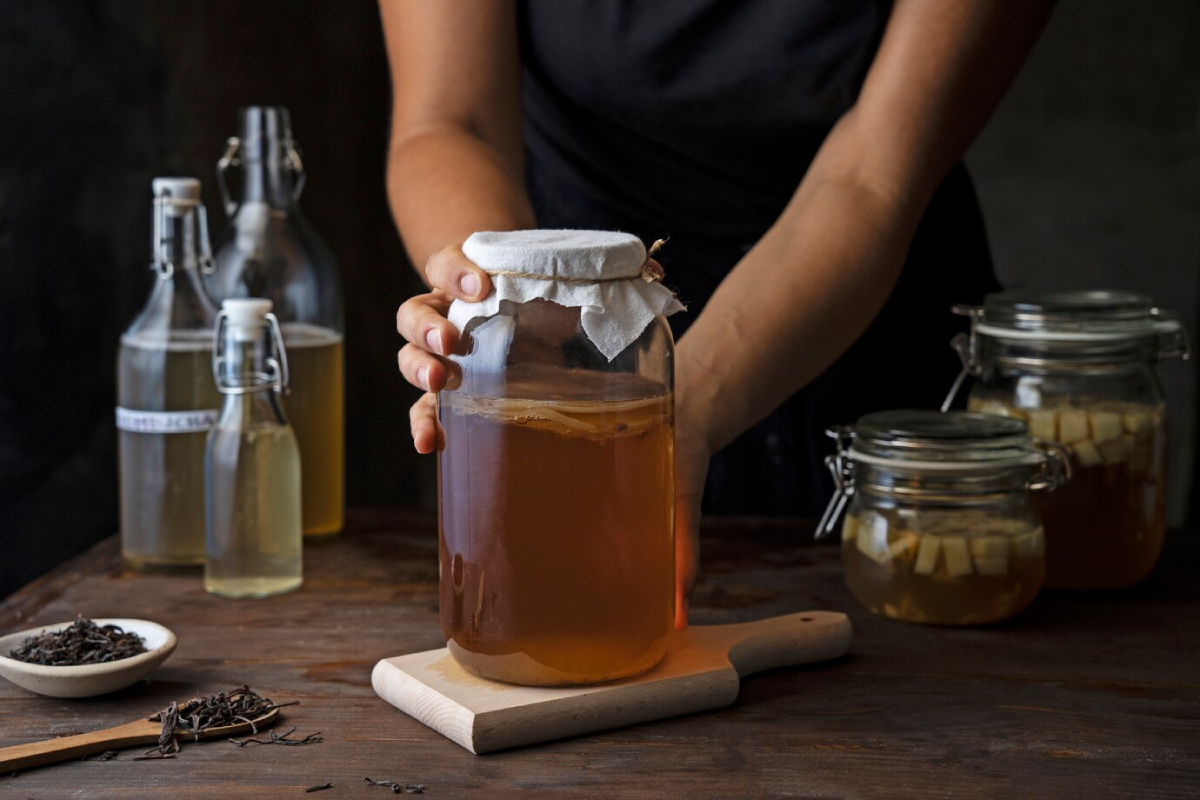
Troubleshooting Kombucha Fermentation
Is My SCOBY Healthy?
A healthy SCOBY is:
- Beige, rubbery, and layered
- May float, sink, or sit sideways (all OK)
- Forms new layer with each batch
Signs of Trouble:
- Black/green fuzzy mould = discard immediately
- Rotten smell = contamination
- Vinegar aroma = normal!
Why No Fizz?
- Not enough sugar or yeast
- Bottles not sealed tightly
- Cold fermentation temperature
Common Kombucha Questions
Can I use herbal tea?
No, stick with black or green tea—herbal teas may lack nutrients for the SCOBY.
What’s the alcohol content?
Typically less than 0.5%. If left too long, it may rise slightly.
Can kids drink kombucha?
Yes, in moderation. Use milder teas and limit quantity.
What if I forget to feed my SCOBY?
If it’s been under 3 weeks, it’s likely fine. Revive with sweet tea and watch for signs of life.
Real People, Real Brews
“Kombucha Boosted My Gut Health” “I used to feel sluggish and bloated. After a month of drinking homemade kombucha daily, I felt more energetic and regular. It’s now a fridge staple.” — Ella, 31, Brighton
“Flavouring Is the Fun Bit!” “I’ve made elderflower kombucha, blueberry-ginger, and even chai-spiced. Every batch is an experiment, and I love that it’s so forgiving.” — Tariq, 38, Manchester
“It Saved Me Money” “I was spending £3–4 a bottle. Now, I brew a month’s worth for that same price. It’s empowering and way tastier.” — Holly, 26, Glasgow
Kombucha Culture and Sustainability
- Reuse SCOBYs: pass them on or compost.
- Avoid plastic during fermentation.
- Bottle in reused glass jars.
- Sweeten second ferment naturally (fruit or honey).
Kombucha Brewing Tips for Success
- Be patient—fermentation is art and science.
- Keep a brew log—record days, temps, and flavours.
- Start small—don’t scale up until you’re confident.
- Use clean but not sterile tools—you want good bacteria to thrive.
- Taste often—your palate is the best judge.
Brew Wellness, One Bottle at a Time
Making your own homemade kombucha is a joyful act of self-care, sustainability, and delicious experimentation. With just a few ingredients and a bit of time, you can create a fermented tea drink that boosts your gut, delights your taste buds, and maybe even becomes your new favourite ritual.
Whether you’re in it for health benefits, flavour play, or budget-friendly hydration, kombucha has a place in your home. So grab a jar, brew some tea, and start your fizzy journey today.
If this guide helped you, let us know your favourite flavour combo or brewing hack in the comments—and don’t forget to share your success with fellow booch lovers!
Learn how to protect your ferments in How to Keep Your Ferments Mold-Free
